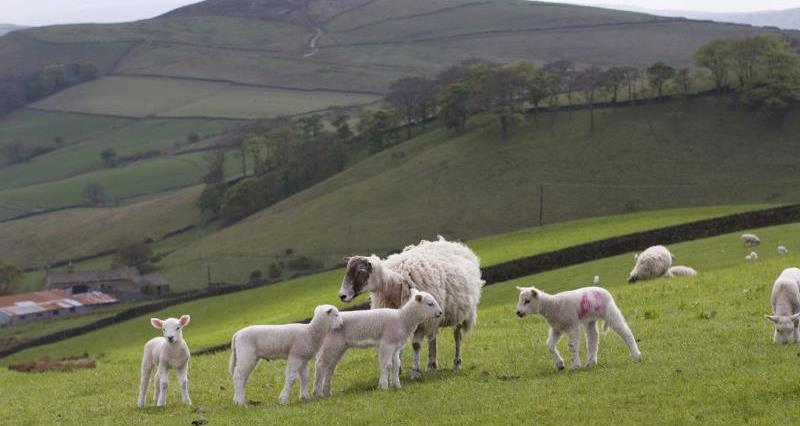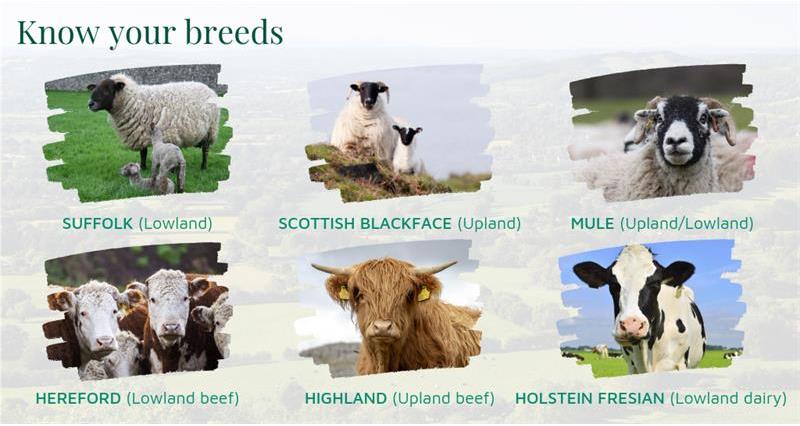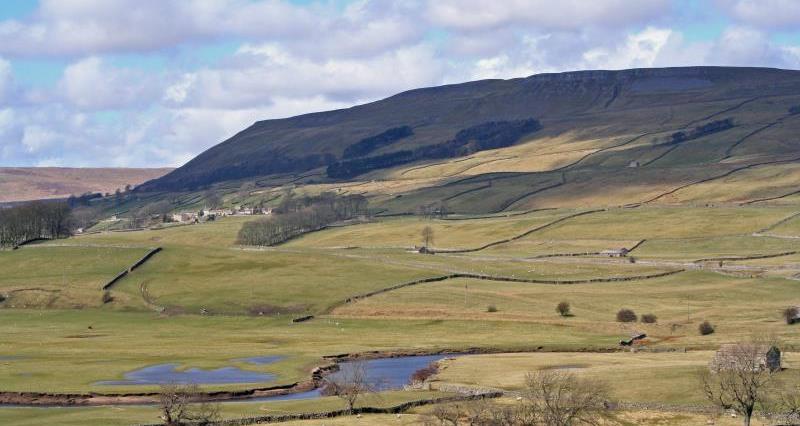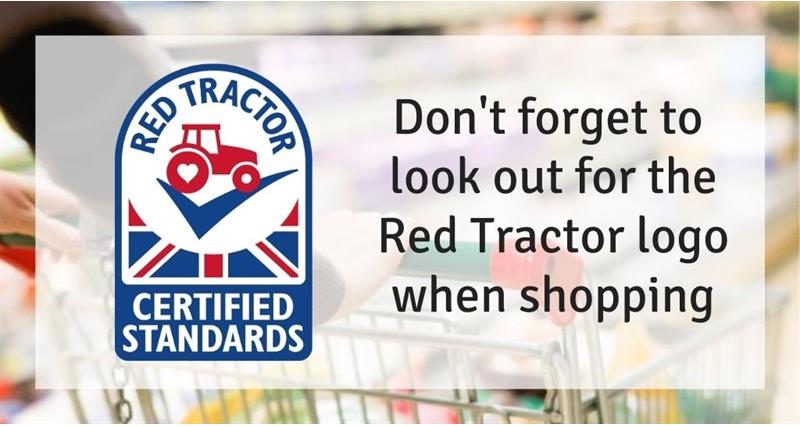Despite harsh conditions, for hundreds of years hill sheep and cattle have grazed and shaped this iconic landscape, and created one of the most important managed environments in the country. Keeping livestock on the hills is the key to maintaining the character of these areas which include treasured landscapes such as the Lake District, the Yorkshire Dales and Snowdonia - in fact nine of the 13 national parks in England and Wales are in hill farming areas.

They also deliver crucial public goods – beautiful landscapes for us all to enjoy and underpin our vital tourism industry. Maintaining and developing biodiversity, protecting population centres from flood risk, providing drinking water for our towns and cities and preserving our heritage are just a few additional benefits. Most crucially of all, our hills provide food for people up and down the country.

To learn more the landscape shaped by livestock, download our 'Hiker's Guide' to learn more about our iconic landscape which aims to provide an insight into common breeds of cattle and sheep, farming activities that happen at different times of the year, wildlife, birds and plants to look out for and guidance on how to enjoy the countryside responsibly.
The landscape created by upland farming is part of what brings over three billion visits to the countryside every year. This in turn supports local jobs in tourism, hospitality and other associated businesses.
Nine of the UK’s National Parks are in upland farming areas. Upland National Parks and Areas of Outstanding Natural Beauty receive nearly 70 million day visits every year, with visitors spending £1.78 billion providing a huge boost to the economy.
Almost every aspect of the hills owes its existence to generations of livestock farmers and their animals. Centuries of farming has created unique views and distinctive characteristics of some of our most loved countryside.
Farmers’ craftsmanship ensure miles of stone walls, hedges and buildings withstand the buffeting of gales and winter storms and managed grazing balances the natural progression to thick woodland and scrub. These features are part of a landscape loved by millions of visitors and provide homes and shelter for much loved wildlife.
Productive and sustainable farming is essential for their future and hill farmers have a genuine interest in leaving the landscape and environment in a better condition for the next generation.
People come from all over the world to visit the iconic landscapes of our upland areas – from the Lake District to the Brecon Beacons. These landscapes simply would not exist without farming.
Upland farmers are proud to produce high quality, grass fed lamb and beef for us to eat. The grassland soils grazed by the animals are managed by farmers to maintain the carbon stored, alongside improving the productivity and environmental footprint of the cows and sheep.
Hill and Upland livestock are not only responsible for shaping iconic landscapes and habitats but are also a key part of our food networks and supply chains, helping to feed the nation.
The hills and uplands are a vital part of our livestock industries, ensuring healthy, sustainable and genetically sound replacement livestock.
These production systems allow for British lamb to be produced all year round, with the UK being the 6th largest producer of sheep meat globally.
Sheep reared in the British uplands spend a majority, if not all of their lives outside at grass. These extensive production systems create a fantastic product; grass-fed red meat which, as part of a balanced diet, holds a huge range of health benefits.
Sheep are a crucial part of the upland landscape. Hill areas often have their own area specific breeds, most famously the Herdwick from the Lake District, but also the Swaledale from Yorkshire, now found all over the country, and the distinctive Exmoor horn from the South West.
Cattle breeds chosen by hill farmers are usually less selective grazers than others and are particularly good at converting low quality forage into high protein human food. They eat a wide range of semi natural vegetation and they can help reduce the dominance of invasive species, such as purple-moor grass and bracken, which may otherwise smother heather moorland. Popular breeds include Aberdeen Angus, Ruby Red Devon and Belted Galloway.
The high elevation and soil makeup of these areas makes farming a particular challenge, with factors including high rainfall, low temperature, harsh weather, acidic soil and isolation from services making some everyday tasks difficult.
Farming on the hills is a tough life, and farmers incomes have been challenged by volatile prices and rising variable costs and rents. Access to housing and broadband is particularly difficult and it can be challenging to diversify and install modern farm infrastructure. One third of lamb produced is exported overseas so secure markets are important for the industry.
Hill and Upland farmers are central to both protecting and enhancing our natural environment, both for current and future generations.
Upland farmers help to protect thriving plants and wildlife. 53% of Sites of Special Scientific Interest land is found in the uplands, with 96% of upland SSSI’s being in favourable or recovering condition. Appropriate grazing is key to conserving many priority habitats such as limestone grassland and upland heath.
The uplands enhance beauty, heritage and engagement with the natural environment. From Dartmoor to Derbyshire, the Pennines to the Peaks, upland and hill farming plays a pivotal role in helping to enhance our much loved landscapes, with over 70% of the uplands within designated landscapes. Almost every aspect of the hills owes its existence to generations of livestock farmers and their animals. Farmers’ craftsmanship ensures miles of stone walls, hedges and buildings that characterise these landscapes. This is delivered alongside open access Moorland, creating a key national asset for health and well-being by providing these green and open spaces.
Upland peat soils and blanket bogs are the largest stores of carbon in the UK, accounting for over 200 million tonnes in England’s uplands alone. Efforts by farmers to protect these habitats are ongoing through sustainable grazing, avoiding erosion, and managing wildfire risk, which helps protect the carbon locked in peat soils.
70% of the UK’s drinking water is sourced from the uplands and best farming practice enhances water quality at source rather than relying on expensive treatment units. Upland farmers are also key to ‘slow the flow’ initiatives, helping to mitigate against flooding in high rainfall periods.

